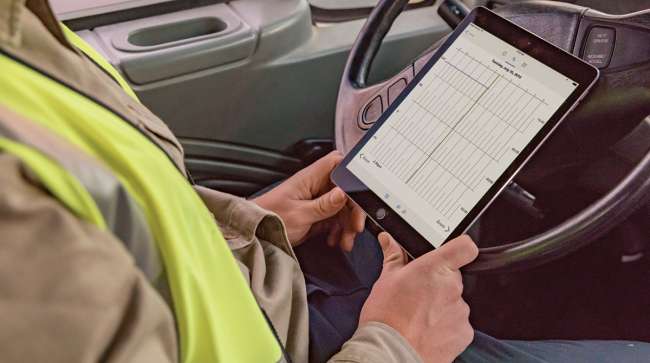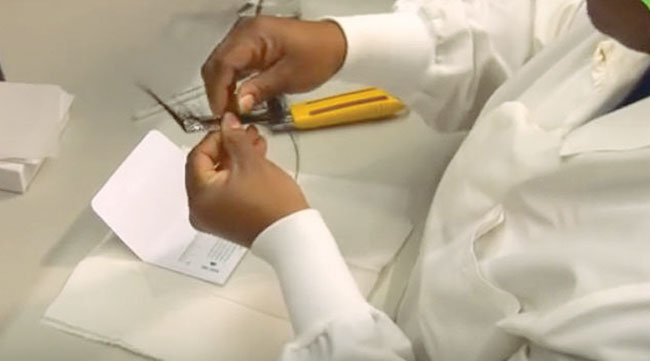Senior Reporter
With New Administration, Regulatory Policy Changes Could Be Coming

[Stay on top of transportation news: Get TTNews in your inbox.]
With a new administration now occupying the White House, the trucking industry soon could see changes in the regulatory landscape.
“When there is a change in administrations, it is standard to have a regulatory freeze so new agency staff have some time to review the issues at hand, and the review can delay or pause the regulatory process,” said Daniel Horvath, vice president of safety policy for American Trucking Associations.
Horvath added, “These reviews can on occasion reach back to impact rules that have already been finalized, which can be a concern. ATA will be closely watching final regulations like the hours-of-service rule, which became effective last September after a long, data-driven process.”

Horvath
Now that Joe Biden is president, a number of proposals, and even new Trump administration regulations, now on a 60-day freeze through mid-March, could be in jeopardy.
Here are a few that are destined for a thorough review by the new administration:
• A recent announcement by the Federal Motor Carrier Safety Administration to seek a pilot project to collect data to determine if a 6/4 and 5/5 sleeper berth split would be safe and effective.
• A recent U.S. Department of Labor final rule and opinion letter to better clarify how motor carriers decide if independent contractors should be reclassified as employees.
• A plan by the U.S. Environmental Protection Agency to fashion a national heavy-truck oxides of nitrogen rule that has been delayed for months, presumably awaiting guidance from the Biden administration.
• After more than two years of study, FMCSA has yet to decide how, or if it will, find ways to merge what elite transportation researchers have called a more precise, but complex, data-driven method — known as the Item Response Theory — intended to improve the evaluation of driver and motor carrier safety.
• An FMCSA decision on whether to sunset a decades-old regulation requiring brokers to make public their pricing documents that some brokers think is out of alignment with today’s brokerage marketplace.

A technician handles a hair sample to be tested at Quest Diagnostics. (DrugTestingTV via YouTube)
• A U.S. Department of Health and Human Services final rule to allow motor carriers to drug test prospective and existing drivers using hair samples.
• A new regulation would allow truck drivers who cannot meet current federal vision standards of either distant visual acuity or field of vision, or both, in one eye to be physically qualified to operate a commercial motor vehicle in interstate commerce.
• A decision on whether to launch a new major study to update a version of the agency’s 15-year-old study to identify factors contributing to all large-truck fatal, injury and tow-away crashes that will help FMCSA make policy decisions.
• A proposed change to a third-party skills test examiner rule that would allow an examiner who has trained an individual to also administer the skills test.
Clearly, some of the sharp policy differences of the Trump and Biden administrations already are beginning to point to possible changes.
The most dramatic change is likely to center on environmental policy.
Future generations are counting on us to deliver on our climate goals this decade, and infrastructure will play a key role in making that possible. It's time to go big! — Secretary Pete Buttigieg (@SecretaryPete) February 22, 2021
While new Transportation Secretary Pete Buttigieg has indicated he’ll look at several regulatory issues, he has been largely noncommittal on what he might change. In his confirmation hearing, he did clearly say that President Biden has issued a “new climate vision.”
In written questions from senators during his confirmation process, Buttigieg said he would look at hours-of-service regulations and how they intersect with the varied complexities of truckers’ daily work, and that he would work with Congress to evaluate regulations and make regulatory decisions “based on the best available data and science.”

Mergers and acquisitions have reshaped the trucking technology sector over the past decade, but what does this trend mean for the trucking and logistics companies that rely on these technologies? Seth Clevenger speaks with James Langley of Trimble Transportation. Hear a snippet, above, and get the full program by going to RoadSigns.TTNews.com.
Buttigieg also said he was committed to examining the federal excise tax on heavy-duty trucks, taking a look at speed limiters, that he would “carefully consider” adding side underguards to trailers, taking a look at allowing 18- to 20-year-olds to drive in interstate commerce and finding ways to address the driver shortage.
Dave Osiecki, president of Scopelitis Transportation Consulting LLC, said, “If history is a guide, the FMCSA-proposed pilot programs aimed at studying greater hours-of-service flexibility for drivers will be shelved.”
“Given organized labor’s ongoing concerns with testing hair samples for drugs, the hill to climb for industry proponents of hair testing has gotten steeper,” Osiecki told Transport Topics. “This is a shame given the industry experience with hair testing outside of the Department of Transportation testing program and the data collected on its effectiveness.”
Osiecki added that with the Biden administration’s desire to pursue aggressive climate change initiatives across the federal government, it’s likely DOT will seriously consider advancing a speed limiter mandate for all large trucks.
Want more news? Listen to today's daily briefing below or go here for more info:

